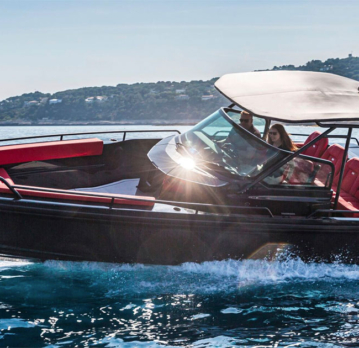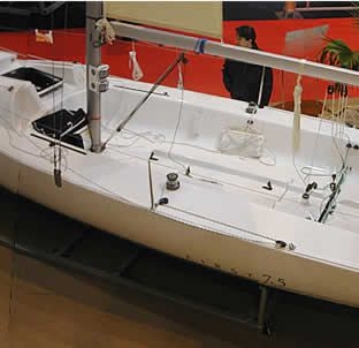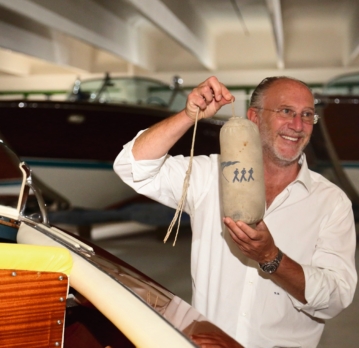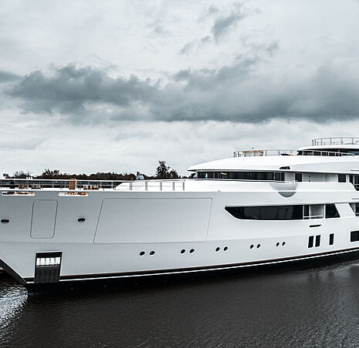The concept of the superyacht Futura, which was previously presented by the design bureau Vripack, turned out to be very interesting not only in terms of design, but also in terms of the announced technologies. The engineers propose to completely abandon fossil fuels in favor of modern biodiesel and produce electricity, including using a kite. However, it would be wrong to store “green” energy in “dirty” lithium batteries, and batteries based on environmentally neutral components, developed by the Dutch company Suwotes, were chosen for its storage. Its general director Lammert de Wit told us about their structure and advantages.
Humanity burns resources in huge quantities, and this process by default implies their irreversible destruction. We are trying to get “green” energy from wind farms, but this decision is dubious, because in the next ten years about 800,000 tons of waste from spent wind turbines will go to landfill. The same goes for solar panels: their parks take up huge areas of soils that can be cultivated. People are digging deeper into the earth in search of lithium and cobalt, further disrupting the natural balance, because their production is no less painful for the planet than the development of oil and gas fields. We take resources from her for our high-energy needs and do not replace them with anything, while all processes in nature are low-energy.
History
We developed a battery based on natural ingredients more than ten years ago for a mining company. They were going to use it in locomotives that haul trolleys with iron ore. Our engineer designed a sand and salt battery on the trolley platform. She had to go right behind the locomotive and provide it with energy for movement in the mine, where the power of the electrical network was not enough for this. All tests were successful, but oil prices fell, and the customer postponed the project on the back burner. A few years later, we studied the state of our battery, which had not worked all this time, and found that its properties deteriorated, as the salt took up water and the electrodes were eaten by corrosion. Then we decided to improve the battery and in the course of research we discovered that the leaves of trees, especially oak, and seaweed are an excellent regulator of the acidity of the salt buffer. Very few of them are required, about 3% of the total mass, and for this, of course, you do not need to rip off trees, since in the same Netherlands, a huge amount of foliage is removed from the streets in autumn.

Principle of operation
Our entire planet is, in fact, a large battery that we have successfully copied. So, if you stick one electrode into the sand on the beach, and lower the other into the sea, then a potential difference will already arise between them. Accordingly, if you put sand and salt in one box and “season” it all with leaves, you get the same battery. Any salt can be used in this case, but the density of the stored energy will depend on its chemical purity.
For the test battery, which has been working great for two years now, we used a buffer with regular table salt from a nearby store. Thus, such a battery is assembled in half an hour in any place where there is sand, salt, leaves or algae. Of course, instead of the latter, acid or alkali can be used to regulate pH, but at Suwotec we strive to use only natural components so that our batteries do not harm nature at all stages of their life cycle.

Suwotec ceramic electrodes do not create a magnetic field

The test battery has been operating without degradation for several years.
The main know-how of Suwotec lies in the special ceramic electrodes that conduct electricity and do not corrode. They do not create a magnetic field, which means that there may be several “pluses” and “minuses” in the same battery. Moreover, with the help of “smart” controllers, it can simultaneously take direct current with a voltage of 12 V and 24 V, as well as alternating current. The electrodes, in the form of plates twisted into a free roll, can be positioned close to each other without any consequences.
Systems approach
The traditional view of batteries implies a desire to store stored energy as long as possible, but we look at them differently. – We integrate batteries into the power systems of a ship or building in order to temporarily store energy from natural sources (sun, wind) if it is not needed at the moment. This requires creating an optimal balance between energy input and consumption, and our low-energy batteries are an integral part of this system, one might say, are its BMS. Note that low energy does not mean slow.
Suwotec batteries solve the problem of two-way energy transfer between high and low energy systems: they can be charged and discharged at the same time, and their only drawback is their size and low energy density per unit mass. They are 4-6 times larger than lithium-ion ones, but they perfectly allow you to smooth out peaks in energy production and consumption. If a wind turbine or kite is generating more energy than is needed at the moment, then it can be quickly transferred to low-energy batteries, which, unlike lithium-ion and other high-energy batteries, are able to quickly absorb peak energy without heating up. Moreover, these cycles do not affect their service life, and the overall efficiency of the system is significantly increased.

As one of the ways to generate energy on Futura, designers suggest using a kite
The batteries that we, together with Vripack, propose to use on Futura are completely safe: they do not heat up with a quick charge and discharge, there is nothing to burn in them, and if a short circuit occurs, the processes inside simply stop. With a decrease in the ambient temperature, their capacity increases, and when it increases, the rate of energy release increases. In any case, there is no risk of thermal runaway.
As for weight, each project will have to solve this problem in different ways, and so far we are talking about replacing ballast with batteries, which is on almost any large ship. Over time, the sand and salt slurry in the batteries hardens, and its density becomes comparable to that of cement. The service life of these batteries is unlimited: during operation, their capacity does not decrease, however, due to mineralization processes, the amount of energy that the battery can give and receive per unit of time decreases. But the process is not fast, and full or partial replacement of batteries can be tied to deep refits.

Thus, Suwotec batteries are tested and ready for use at sea, and they have no competitors yet. We have not yet communicated with the registers, but I am sure that such safe batteries will not have problems with certification. Now we are looking for investors for organizing the industrial production of electrodes, since in small-scale production, the production of one plate (approximately 10 × 20 cm) costs 900 euros. When this happens, the cost of these batteries can drop to € 100 per kWh. And while companies like ours are greatly hindered by lobbies from lithium battery manufacturers, we will continue to rely on the conscientiousness of consumers who in the future will choose environmentally friendly products, rather than those that are convenient for manufacturers to bring to the market, guided only by their own interests.
Text
Anton Cherkasov-Nisman
Chief Editor














What do you think?